The Defence Infrastructure Organisation has launched a search to find the artist of mysterious Falklands painting.
The picture was found in a former classroom at HMS Raleigh by a staff member who works for the Defence Infrastructure Organisation (DIO).
According to the DIO:
“With the classroom not currently in use, the painting had been all but forgotten about. A key part of DIO’s role is to maintain the Defence estate and ensure that Ministry of Defence (MOD) buildings are able to support armed forces personnel. The painting was found in Building 110, affectionately known as the Fieldhouse block – named after Admiral Fieldhouse, who led the retaking of the Falkland Islands.
The artwork shows a graphic scene from the Bluff Cove Air Attacks during the Falklands War. The far right of the image is thought to show a burning RFA Sir Galahad during the attack, which saw the greatest loss of British life throughout the entire conflict. A total of 56 British personnel were killed in the attack, with 48 of these perishing following the bombing of RFA Sir Galahad.”
Following its discovery, the painting has prompted discussions and questions about who could have been behind its conception. It is currently not known who could have created the artwork or if they were present during the conflict.
Jon Rickman-Dawson, DIO Facilities Manager at HMS Raleigh, who found the painting, said:
“As part of my role looking after the built estate, I went into a disused building while demolition work was happening nearby to check the building was still in good condition. I walked into what was a classroom and, on the wall, I noticed a very unusual piece of artwork. I took photos of it and started to ask questions to people who have worked on the site for a long time as to what they knew about it and what it is of.
My hope is that someone will see the picture and it will make them remember something. It would be great to credit someone; other sites have so much history, they might have great gold-framed oil canvases, but we have got this.”
The painting, which measures 20ft by 6ft, now sits in the Trainees’ Bar at HMS Raleigh where it can be seen by those training at the base, as well as by their families visiting for Passing Out ceremonies.
Base commander at HMS Raleigh, Sean Brady, said:
“What we want is to find who the artist is, where they are now and what they were trying to show with this painting. I thought the artist was trying to show the reality of what happens in conflict and this picture shows it really well.”
The artwork is believed to have been painted between 1982 and 2010, and it is very likely by somebody who was there on the day of the air attacks, due to its level of detail and the emotion it stirs up for veterans. Anybody who knows who may have painted the artwork is urged to get in touch with DIO by emailing [email protected], or via social media channels.


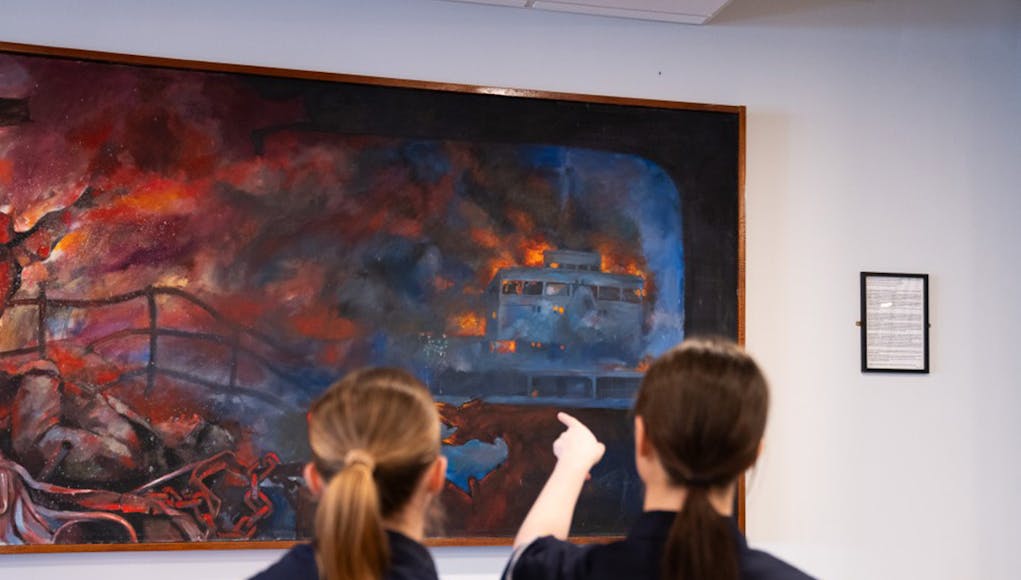
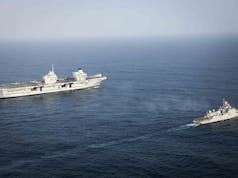
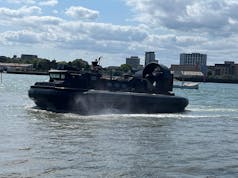



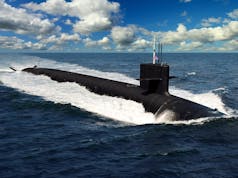



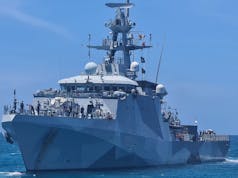

I was serving at HMS Raleigh when this picture was unveiled in one of the recreation rooms and I witnessed the presentation. It was, I think, painted by a local (Plymouth) area artist, a comparatively young man who had not, I believe, ever served in the forces. I can’t recall his name. He was distinctly bohemian in appearance and brought some rather unprepossessing friends along who voiced some distinctly anti-war views. This was in 1985, probably in the spring (old men forget). Originally the captain of Raleigh, Captain Brian Brown RN, was going to formally accept the painting as a gift, but I seem to recall that the local media were already expressing the view that the painting was controversial, this being only three years after the Galahad incident. Instead, at the last minute the senior dental (or perhaps medical) officer was prevailed upon to do the honours since Brown didn’t want any controversy linked to him – he was already on the road to becoming Second Sea Lord as I recall. There was some media coverage at the time and there should be details in the archives of the local Plymouth newspaper and, possibly, the BBC. The intention after the rather controversial presentation was to either cover it up or find some way of hiding it since it is fairly ghastly in the flesh, artistically speaking. I am just amazed it hasn’t been painted over. That’s all I can remember, but it gave me a bit of a jolt to see it shown here 39 years later.
Ah well. Might be worth keeping. Perhaps Van Gogh was known in his day as “some local nutter in need of a wash” as well. Heaven knows we can’t stop much lower than Banksy.
As a Concessionary Travel Card Scheme Card-holder Residential In Scotland for the duration of my existence “and from First-hand Experiences of Detrimental Comments on my Living Circumstances and Being IN NEED OF A WASH, Even in Nowadays Residential Situation, that would seem Dictated-by My Quarter Century of Diagnosed Mental Health Disorders and On Medications For, Throughout AND Continuing……..
Thus MY Detachment From Circulation of Formal Employment World for FULLY FOUR DECADES and Caution Regards Comments on Defence Matters……..
IT WOULD SEEM, From Memory of Travel Card Journeys to South West Scotland from Central Scotland, Considerable Number of War Artists would seem to be Residential in the Moniaive Localities and Their Mostly Watercolour Works-of-Art would seem to be Displayed in an Art Gallery and Museum in Dumfries in South West of Scotland ~ Alongside detailed Narrative Descriptions as to their own Backgrounds and the Reasons for the Work-of-Art Displayed at the time of Availability for Public Viewing.
Many War Artists would seem to have lived in Rural Scotland and SURVIVED TO GREAT AGE (In Terms of Longevity).
Well Worth A Viewing
It wasn’t me! ( part time artist here mixed with day job )
Trainee’s Bar?! A near mythical luxury when i was going through Basic Training – although i do recall that as my squad had done very well and won all the competitions against our rival trainees that our PO bent the rules and let a few of us nip out for a quick couple of pints one evening ⚓🏴☠️⚓
Shortly after the Falklands War I remember seeing something on TV, probably a news report, about a woman who was an official war artist during the conflict. I can’t remember her name (I mean it was 40 years ago and I was still at school!) but I’ve never heard anything about her or her work since.
I assume being an official war artist means she was commissioned and paid by the MOD who would then own anything she painted at the time. Does anyone know what happened to her paintings? Squirrelled away at the IWM archive perhaps?
She released a book of her sketches their pretty good, but I don’t think she was a painter.